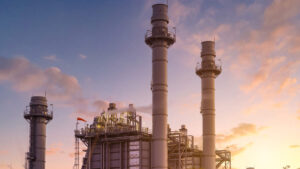GOT GAS: Hydrogen, wherefore art thou (policy)

Hydrogen proponents will no doubt love to see coherent policies from the Australian government. Pic: Henrik Sorensen via Getty Images
Hydrogen is widely recognised as a key component in the world’s transition towards net zero emissions, so it should be no surprise that interest in the industry has been growing.
From the South Australian government flagging in late March strong global interest in its Hydrogen Jobs Plan with 29 proposals received to motorcycle manufacturer Kawasaki dropping hints that hydrogen fuel cell motorcycles could be appearing on its line-up, it is clear that the momentum is building.
And this why Deloitte’s call for Australia to urgently support renewable hydrogen production is so important.
But wait you say, how is that any different from what everyone else and their grandmother is saying?
Well, Deloitte notes that Australia’s economic future will depend on rapid deployment of renewable energy, renewable hydrogen to decarbonise hard-to-abate sectors, and to enable clean manufacturing and supply chains.
Deloitte Access Economics head Dr Pradeep Philip believes that while Australia has a wealth of comparative advantages in green industries like hydrogen, it is at the risk of falling behind, and our global competitiveness is declining with the US Inflation Reduction Act looking to set to “cut Australia’s renewable hydrogen lunch”.
“Australia will need to take decisive and swift policy action to secure Australia’s global competitiveness – this means an urgent and significant new energy-industrial policy,” he added.
“These new policy settings should aim to maximise public value by building out place-based industrial ecosystems and offering support across value chains to grow value-added economic activity within Australia.”
Star Scientific deputy chief executive Matthew Hingerty added that while major companies had unveiled plans to take advantage of the US policies, Australia had to be careful about trying to match our much larger ally’s efforts.
Rather than giving handouts, he urged governments to create coherent strategies that accelerate demand for hydrogen.
Federal Government hydrogen policy
So just what has Australia been doing to date?
Without taking state governments into account, the single largest commitment to date is the $3bn of the $15bn National Reconstruction Fund which has been committed towards the manufacture of low- or zero-emissions technology for use in Australia.
A review is also underway on the National Hydrogen Strategy to ensure that Australia remains on a path to be a global hydrogen leader by 2030 for both exports and to decarbonise Australian industries.
This is likely to provide the best idea on how Australia intends to become a leader in the hydrogen industry in light of increasing competition.
And it is absolutely critical that we do so if we are to develop a world-leading industry.
Gas supply concerns easing?
A well developed hydrogen industry could also go a long way towards easing East Coast natural gas supply concerns, particularly when it is blended into the domestic pipeline gas for heating and cooking.
Gas concerns aren’t going away anytime soon, after all, if the recent Redbridge study by the Australian Pipelines and Gas Association is anything to go by.
The study, which had a sample size of 3,032 people in inner-city Melbourne, outer suburban Melbourne, as well as Bendigo, Ballarat, and Wodonga, found that the majority of those surveyed were in favour of bringing on new supply.
About 63.8% of the respondents acknowledge the importance of natural gas in Australia’s transition to net zero, with more than 40% indicating it was ‘very important’.
Just 22.2% of Victorians believe natural gas is ‘not important’ while 25.9% do not support gas projects – even if they unlocked further expansion of renewable projects.
That said, the Australian Competition and Consumer Commission’s (ACCC) March 2023 interim gas inquiry report has found that there should be sufficient gas supply in the east coast gas market against forecast demand if LNG producers make another 3PJ of gas available for domestic use.
This is a massive improvement over the 27PJ shortfall that the ACCC had previously forecast in January due to an increase in forecast gas production and LNG producers committing some additional sales to the domestic market.
However, it warned that “lower-than-expected gas supply, including from the Northern Territory or the Gippsland Basin, or higher than expected domestic demand, such as for gas powered generation could lead to lower available gas supply”.
What this means is that while some of the worst fears about a gas supply shortage have been muted, there is still a very real need for the Australia to find and develop new sources of gas supply, at least in the short to medium term.
This is of course the same conclusion reached by the APGA survey, which also claimed that both natural gas and renewable gas were vitally important for the long-term affordability and security of the energy system.
Make of that what you will.
Related Topics

UNLOCK INSIGHTS
Discover the untold stories of emerging ASX stocks.
Daily news and expert analysis, it's free to subscribe.
By proceeding, you confirm you understand that we handle personal information in accordance with our Privacy Policy.








